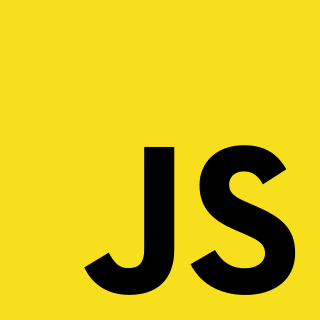
In computing, a web application or web app is a client–server computer program which the client runs in a web browser. Common web applications include webmail, online retail sales, and online auction.

JavaServer Faces (JSF) is a Java specification for building component-based user interfaces for web applications and was formalized as a standard through the Java Community Process being part of the Java Platform, Enterprise Edition. It is also a MVC web framework that simplifies construction of user interfaces (UI) for server-based applications by using reusable UI components in a page.

A server-side dynamic web page is a web page whose construction is controlled by an application server processing server-side scripts. In server-side scripting, parameters determine how the assembly of every new web page proceeds, including the setting up of more client-side processing.
A web framework (WF) or web application framework (WAF) is a software framework that is designed to support the development of web applications including web services, web resources, and web APIs. Web frameworks provide a standard way to build and deploy web applications on the World Wide Web. Web frameworks aim to automate the overhead associated with common activities performed in web development. For example, many web frameworks provide libraries for database access, templating frameworks, and session management, and they often promote code reuse. Although they often target development of dynamic web sites, they are also applicable to static websites.
Echo is a web application framework created by the company NextApp. The latest iteration, Echo3, allows writing applications in either server-side Java or client-side JavaScript. Server-side applications do not require developer knowledge of HTML, HTTP, or JavaScript. Client-side JavaScript-based applications do not require a server, but can communicate with one via AJAX.
ASP.NET AJAX, formerly called Atlas, is a set of extensions to ASP.NET developed by Microsoft for implementing Ajax functionality. It is released under the Microsoft Public License (Ms-PL).
Comet is a web application model in which a long-held HTTPS request allows a web server to push data to a browser, without the browser explicitly requesting it. Comet is an umbrella term, encompassing multiple techniques for achieving this interaction. All these methods rely on features included by default in browsers, such as JavaScript, rather than on non-default plugins. The Comet approach differs from the original model of the web, in which a browser requests a complete web page at a time.

Aptana, Inc. is a company that makes web application development tools for Web 2.0 and Ajax for use with a variety of programming languages. Aptana's main products include Aptana Studio, Aptana Cloud and Aptana Jaxer.

Document Update Markup Language (DUML) is an XML specification created by Brian Kardell to enable server-side logic DOM manipulation outside the context of conventional JavaScript functions.
The Sun Web Developer Pack (SWDP) is a collection of open source software released by Sun Microsystems for developing web applications that run on Java EE application servers. The SWDP is targeted at software developers interested in writing web applications that use Web 2.0 technologies such as Ajax, REST, Atom, and JavaScript.
Morfik Technology Pty Ltd. is an Australian software company that was acquired by Altium in 2010.
ItsNat Natural AJAX, is an open-source Java component-based Ajax framework.
A single-page application (SPA) is a web application or web site that interacts with the user by dynamically rewriting the current page rather than loading entire new pages from a server. This approach avoids interruption of the user experience between successive pages, making the application behave more like a desktop application. In a SPA, either all necessary code – HTML, JavaScript, and CSS – is retrieved with a single page load, or the appropriate resources are dynamically loaded and added to the page as necessary, usually in response to user actions. The page does not reload at any point in the process, nor does control transfer to another page, although the location hash or the HTML5 History API can be used to provide the perception and navigability of separate logical pages in the application. Interaction with the single page application often involves dynamic communication with the web server behind the scenes.

Apache Sling is an open source Web framework for the Java platform designed to create content-centric applications on top of a JSR-170-compliant content repository such as Apache Jackrabbit. Apache Sling allows developers to deploy their application components as OSGi bundles or as scripts and templates in the content repository. Supported scripting languages are JSP, server-side JavaScript, Ruby, Velocity. The goal of Apache Sling is to expose content in the content repository as HTTP resources, fostering a RESTful style of application architecture.
ZK is an open-source Ajax Web application framework, written in Java, that enables creation of graphical user interfaces for Web applications with little required programming knowledge.

Google Closure Tools is a set of tools to help developers build rich web applications with JavaScript. It was developed by Google for use in their web applications such as Gmail, Google Docs and Google Maps.
This is a list of articles related to the JavaScript programming language.







